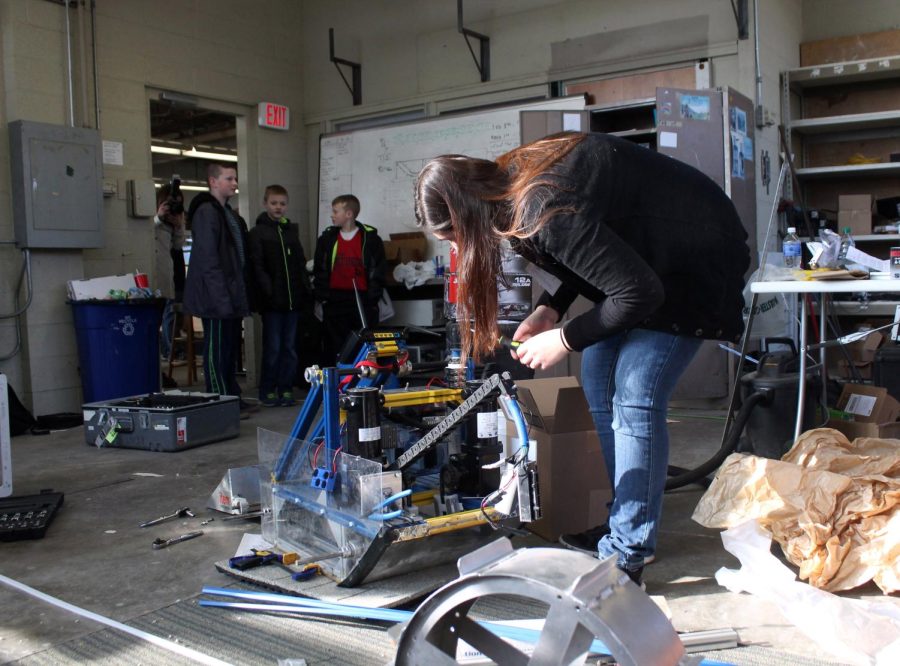Kent State Robotics Team successfully hosts first annual NASA practice competition.
Sophomore Kent robotics team member Sarah Rosenbaum adds some final touches to her team’s robot before the practice competition on Saturday, Feb. 6, 2016. The team competed against Virginia Tech, Akron University and Iowa State in a practice round before the final competition in May.
February 9, 2016
The Kent State Robotics Team hosted its first ever robotic mining practice competition on Saturday, Feb. 6. The practice took place in the old glass lab located in the Michael Schwartz Center.
The University of Akron, Virginia Tech and Iowa State University all attended the competition to test out their robots in preparation for this year’s annual NASA Robotic Mining Competition that will take place at the Kennedy Space Center in Florida in May. Case Western Reserve University registered for the event but did not attend due to complications.
The teams competed in the 12-by-23 foot arena pit constructed by the KSU team, with some help from construction management students. Within the pit was 20 tons of gravel, 10 tons of feldspar and obstacles such as small boulders.
Virginia Tech took first place in the practice competition, Iowa State took second place and Kent took third. All teams, including Akron, experienced issues with their robot at some point in the day, but all were able to successfully solve the problems and get a chance to mine in the practice pit.
The practice competition was judged by representatives from the Glenn Research Center in Cleveland. Sarah Rosenbaum, who worked extensively to organize the competition, said that the representatives judged teams mainly based on the robot’s future potential.
Although the competition was judged, it was regarded by the teams as more of a design review session where members had a chance to peer review others’ robots and designs in order to improve them for the competition.
Rosenbaum said the NASA representatives offered teams valuable insight on their designs and robots and were able to make a lot of suggestion for improvements.
“It was hugely helpful to be able to have a critical review from the NASA engineers,” said Zac Kilburn, a member of the Akron Robotics Team. “We were able to gain insight that will allow us to optimize our approach towards finalizing this year’s design; normally, the only time we would be able to get this level of review is at the actual NASA competition itself.”
Danny Schon, a member of Iowa State’s team, said her favorite part of the practice was that it was able to bring teams together to work and hangout that would normally only see each other once a year.
“Being able to get a new set of eyes on a problem and collaborating with other teams was really beneficial to us,” said Schon. “We also really enjoyed the atmosphere and being able to work on getting some bugs out in our design with a real practice pit.”
The Kent State Robotics Team also had setbacks with its robot but was able to get the drive train working and practice moving around the pit without mining.
In the coming months, Rosenbaum said the team will be focusing on designing a different set of wheels for its robot and was even invited back to the Glenn Research Center by representatives to look at different wheel prototypes for inspiration.
Jenna Kuczkowski is the college of applied engineering reporter for The Kent Stater. Contact her at [email protected].












